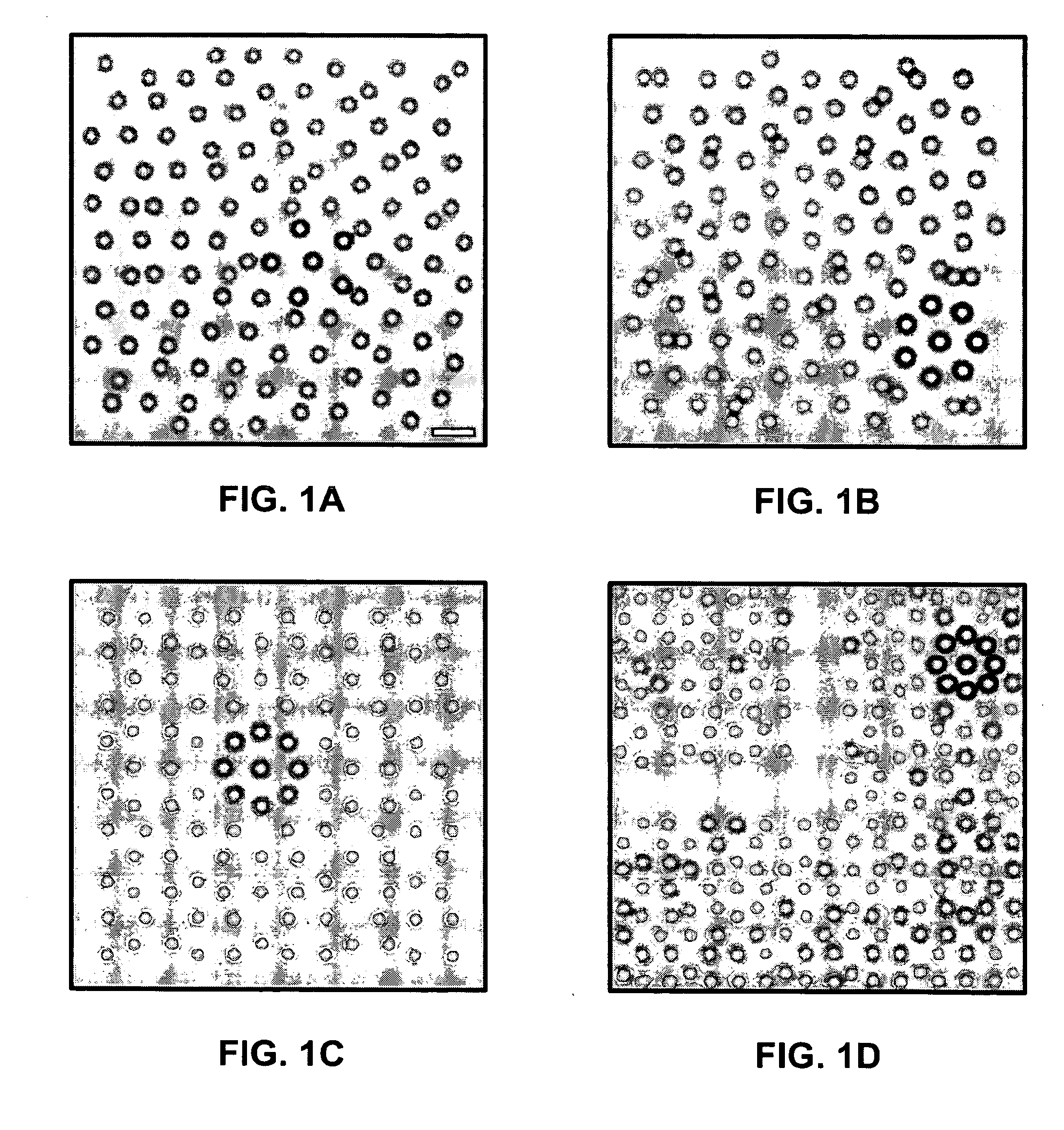Assembly of quasicrystalline photonic heterostructures
a photonic heterostructure and quasi-crystalline technology, applied in the field of quasi-crystalline heterostructures, can solve the problems of optical materials whose optical properties are very sensitive to structural and chemical defects, and the limitations imposed by such crystalline symmetry
- Summary
- Abstract
- Description
- Claims
- Application Information
AI Technical Summary
Benefits of technology
Problems solved by technology
Method used
Image
Examples
example
[0040] Colloidal silica microspheres 1.53 μm in diameter (Duke Scientific Lot 5238) can be organized by first being dispersed in an aqueous solution of 180:12:1 (wt / wt) acrylamide, N,N methylenebisacrylamide and diethoxyacetophenone (all Aldrich electrophoresis grade). This solution rapidly photopolymerizes into a transparent polyacrylamide hydrogel under ultraviolet illumination, and is stable otherwise. Fluid dispersions were imbibed into 30 μm thick slit pores formed by bonding the edges of #1 coverslips to the faces of glass microscope slides. The sealed samples were then mounted on the microscope's stage for processing and analysis.
[0041] Silica spheres are roughly twice as dense as water and sediment rapidly into a monolayer above the coverslip. A dilute layer of spheres is readily organized by holographic optical tweezers into arbitrary two dimensional configurations, including the quasicrystalline examples in FIGS. 1(a)-(d). FIGS. 1(a), (b) and (c) show planar pentagonal, h...
PUM
| Property | Measurement | Unit |
|---|---|---|
| wavelength | aaaaa | aaaaa |
| diameter | aaaaa | aaaaa |
| thick | aaaaa | aaaaa |
Abstract
Description
Claims
Application Information
 Login to View More
Login to View More - R&D
- Intellectual Property
- Life Sciences
- Materials
- Tech Scout
- Unparalleled Data Quality
- Higher Quality Content
- 60% Fewer Hallucinations
Browse by: Latest US Patents, China's latest patents, Technical Efficacy Thesaurus, Application Domain, Technology Topic, Popular Technical Reports.
© 2025 PatSnap. All rights reserved.Legal|Privacy policy|Modern Slavery Act Transparency Statement|Sitemap|About US| Contact US: help@patsnap.com



